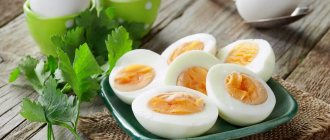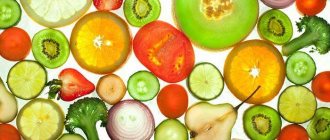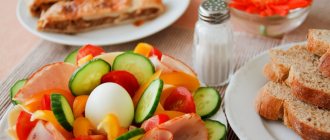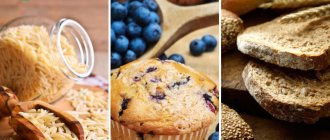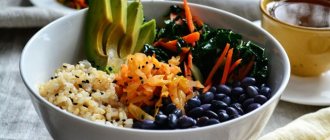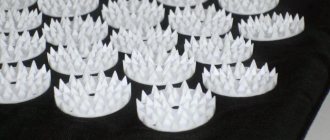Basic rules of the freshly squeezed juice diet
Basic rules of the freshly squeezed juice diet:
- Juices in packages should not be used for dieting.
- The juice should be drunk through a straw.
- Before starting a juice diet, you should consult a doctor.
- Before drinking, the juice must be diluted with water in a ratio of 1 to 1. The water should not be carbonated or sweet.
- The diet requires preliminary preparation of the body.
- In addition to the specified volume of juice, you need to drink 1.5 liters of water every day. It can also be green tea, herbal tea.
- After preparation, the juice should be consumed within 15 minutes. It should not be stored longer.
- To prepare juice, you need to take only fresh vegetables that have not previously been frozen or canned.
- Early vegetables often contain large amounts of nitrates, so using them for juicing is not recommended.
- The juice must contain pulp, so it should not be strained or clarified.
- Alcoholic drinks are absolutely prohibited during the diet. Alcohol provokes an increased feeling of hunger, which negatively affects a person’s well-being and can lead to a breakdown.
Preparing for detox
When preparing for a detox, the first thing you need to do is identify the reason why you want to start cleansing your body: excess weight, digestive and skin problems, lack of energy?
And be sure to consult a specialist before switching to detox.
If previously the body spent a large amount of energy on processing food, then during detox it is released. There is a feeling of lightness in the stomach, and sleep becomes more restful.
Most importantly, on a liquid diet you need to drink enough freshly squeezed vegetable and fruit juices and water with lemon juice. It dulls the feeling of hunger and improves kidney and liver function.
Preparing for a diet with freshly squeezed juices
To properly prepare for a diet on freshly squeezed juices, you must follow the following principles:
- The diet should be cut back a few days before starting the diet. That is, the person will eat as before, but the portions should be smaller.
- Confectionery, baked goods, sweets, smoked dishes, spicy and fried foods are excluded from the menu.
- The diet should include more fresh vegetables and fruits.
- Mayonnaise and sugar should not be eaten.
Menu options
Menu for 3 days
The result is minus 3 kg.
Menu for 5 days
One of the most strict schemes. If your hunger is unbearable, you can satisfy it either with nuts (in a minimal amount) or with the vegetable/fruit from which you drink that day.
Variations are allowed: on days 1, 2 and 3 you can drink any other fruit juices, fresh juices and smoothies, on days 2 and 4 - any vegetable juices of your choice.
The result is minus 5 kg.
Menu for 7 days
A more balanced and gentle diet.
The result is minus 5 kg.
On a note. Nutritionists recommend that older people choose cherry juice to lose weight, as it helps with gout and slows down the aging process.
Diet options using freshly squeezed juices
Cheri Kalbom offers her followers two types of diet using freshly squeezed juices. One of them is designed for 5 days, and the other for 14 days. In turn, the menu for 14 days also has three options, all of which vary in severity.
In addition, you can arrange fasting days for yourself, when you drink exclusively juice throughout the day.
One day juice diet
A one-day juice diet is a preparatory option before starting a longer weight loss method. It can also be used as a fasting day, when you are allowed to drink only vegetable juice and vegetable broth. You should also drink clean, still water and herbal tea.
You need to prepare the juice yourself. To do this, you can use the following vegetables: tomatoes, carrots, beets, sweet peppers, herbs and parsley roots, celery. It is allowed to consume juices either individually or mix them.
One-day juice diet menu:
- First meal: tea (herbal or green with lemon juice), or water with lemon juice and a glass of juice.
- Snack: herbal tea, vegetable juice, glass of water with lemon.
- Main meal: a mix of 8 different juices, or vegetable juice.
- Snack: heated vegetable broth, a glass of water with lemon, vegetable juice.
- Dinner: avocado and carrot smoothie, or a glass of vegetable juice, or a cucumber and avocado smoothie.
Juice diet for 5 days
You need to eat a five-day juice diet 5 times a day.
The menu is standard and does not change throughout the entire time:
- Morning (08:00) – a glass of apple juice and a glass of green tea.
- First snack (10:00 – 12:00) – juice mix: lemon + orange + pineapple.
- Day (13:00) – fruit and vegetable smoothie (apple, celery, carrots, beets).
- Second snack (15:00) – any juice, 1 glass.
- Evening (18:00) – 100 g of pineapple and a glass of pineapple juice.
- Before bed (21:00) – vegetable juice from tomatoes and carrots. It is permissible to prepare a mix of these juices.
When hunger begins to torment you between main meals, you can quench it with a glass of water or unsweetened green tea.
14 Day Juice Diet
A diet designed for 14 days is excellent not only for losing weight, but also for cleansing and rejuvenating the body. The main product is juice; in addition, you need to drink at least 8 glasses of plain water per day.
A gentle option.
In the gentle version, it is necessary to replace only one main meal with juice. The rest of the time, a person follows his usual menu. It will not be possible to quickly get rid of extra pounds on such a diet. Therefore, it is recommended to those people who want to fix the results already achieved, and not lose weight. This diet can be followed for a long period of time, because it does not cause metabolic problems and is not dangerous to health.
If you want to lose weight at the same time, then each serving can be reduced to 250 g. It is also advisable to exclude fatty and fried foods, sweets, sugar and salt from the menu, or limit their consumption.
Moderate option.
If you follow a moderate diet, you will need to replace two main meals with juice: breakfast and dinner. During your lunch break you should avoid meat dishes. If it is difficult to endure a vegetarian menu, then eating meat is allowed, but in limited quantities. Moreover, you can eat as many vegetables for lunch as you want.
This diet can last from 5 days to a week, but no more than 2 weeks. In 14 days you will be able to get rid of 7 kg of excess weight.
Strict option.
A strict version of the diet involves eating exclusively freshly pressed juices. You should only drink vegetable and fruit juices that contain pulp. They are not sweetened or added salt.
Juice can be replaced with tea, rosehip decoction, still mineral water. They also don't have any added sugar. You need to drink at least 2 liters of liquids per day.
This diet option is suitable only for those people who have good endurance. For each day of the diet you will lose 1 kg of weight.
General rules
For the first time, people started talking about juice treatment after the publication of N. Walker’s book “Raw Vegetable Juices” in 1936. It explores the concept of "living" and "dead" food. According to Walker, only live food that has not been subjected to heat treatment is useful. The author classifies freshly squeezed juices as precisely such food, since they contain enzymes, antioxidants , vitamins and microelements , which are easily absorbed by the body and provide the greatest benefit.
Enzymes are sensitive to temperatures above 47°, so they are not contained in thermally processed vegetables and fruits. To facilitate the work of the gastrointestinal tract, the author recommended juices, and not vegetables and fruits in their natural form, which, due to the presence of fiber, are digested in 4 hours, and juices in 15-20 minutes. According to his method, it is suggested to drink at least 600 ml of juices per day, and for medicinal purposes - up to four liters. However, he proposed doing all this against the backdrop of a diet that included eggs, cereals, and legumes, which are a source of vegetable protein (N. Walker is against consuming milk and meat).
According to his method, you can do a three-day detoxification of the body with citrus juice: 4 large grapefruits, 2 large lemons, oranges to get 2 liters with the addition of 2 liters of water. In the morning it is suggested to drink a laxative (according to his recommendation, a solution of Epsom salts) and after that drink a citrus mixture every hour. At the end of the day you can add celery juice. At night, do an enema with two liters of water.
It is better to choose vegetable juices to cleanse the body - this option is better, since vegetables contain less sugar and calories. A diet juice is one that contains fewer calories. So, cucumber - 14 kcal per 100 g, tomato - 17.3, spinach - 21 kcal, cabbage - 25 kcal. Adding avocado and apple juice to a kale-spinach-cucumber mixture significantly increases the calories and sugar, potentially reducing weight loss.
By consuming vegetable juices, you can lose weight, as they are low in calories. Currently, numerous options for juicing diets are offered. What they have in common is that they all use natural freshly squeezed juices, which have undeniable advantages: low calorie content and high content of nutrients. It is better to consume them immediately after preparation, since storage leads to oxidation and loss of beneficial properties. In a pinch, they can be stored in the refrigerator for 3-4 hours in a glass container with a lid.
For those who want to lose weight gradually, it is recommended to drink juices once a day, replacing dinner with them. The rest of the time you need to eat right, sticking to a semi-vegetarian diet. The weight starts to come off after two weeks. You can also replace breakfast and dinner with juices, and leave lunch semi-vegetarian (eggs, legumes, nuts, and not eat fish and dairy products every day). It is important not to overeat.
In the strict version of the diet, the daily diet consists of only 2-3 liters of juice, which are drunk throughout the day. In addition to this, you can drink green tea, water, or rosehip infusion. Solid food is not consumed. In practice, this can be called fasting. Sticking to such a diet is difficult and not everyone can handle it. First of all, psychologically, since solid food cannot be consumed, and juices are quickly absorbed and there is a constant feeling of hunger.
The fact is that they contain a lot of sugar and after taking them, the level of glucose in the blood and the release of insulin , and this is followed by a decrease in glucose and attacks of hunger, accompanied by weakness and dizziness . Weight loss with this regimen is 500 g per day or more. This juice diet for weight loss is designed for 7 days.
If you nevertheless decide on this nutrition option, in order to successfully complete it to the end you need to follow some rules:
- For a few days, eliminate meat, fried and fatty foods, coffee, and alcohol.
- Start every day of juice therapy with a glass of water with lemon juice.
- Drink warm herbal teas, hot water with ginger and lemon throughout the day.
- For breakfast, prepare green smoothies - avocado + green salad + kiwi + parsley + cucumber + spinach. This will not disrupt the regime, but will be psychologically perceived as a meal.
- If the drinking diet is difficult to tolerate, you can eat cucumber, celery or kiwi during the day.
It is also important to gradually exit the diet, and if you have been on it for 7 days, then the exit should be three days. On the first day, apples and vegetables are added (can be stewed to avoid intestinal problems). On the second day, porridge, bread, and nuts are included. From the third day, normal nutrition is already possible: vegetable soups, boiled fish and chicken, porridge and dairy products. Dishes should be steamed, stewed, baked or boiled. It is also worth reducing the usual portions by half.
No one argues that the juice diet has healing properties, but it can be used for a long time only on the recommendation and under the supervision of a doctor (like therapeutic fasting). It helps get rid of migraines , skin problems, insomnia and thrush , but it should be used with caution for stomach diseases ( gastritis and peptic ulcers ), high acidity, liver and pancreas diseases. Contraindicated in diabetes , insulin resistance and high blood cholesterol.
By undertaking this diet, you are depriving yourself of many food groups because the juice diet does not contain essential nutrients. The most dangerous thing is the lack of protein, calcium and vitamin D , and unsaturated fatty acids in the diet. A diet depleted of proteins leads to numerous irreversible metabolic disorders, since without amino acids not a single process occurs in the body. Protein begins to be drawn from muscle tissue - muscle mass is lost, and they become flabby. Apparent thinness occurs due to water loss and muscle atrophy, and not due to fat.
Lack of fiber can cause constipation . Dietary fiber not only normalizes intestinal function, but also helps maintain cholesterol and blood sugar levels at the same level, reducing the risk of diabetes. Juices are carbohydrate foods (fruit juice, for example, contains 6-8 teaspoons of sugar in one glass) and when consumed, sugar and insulin levels are unstable, which plays a major role in the development of diabetes.
After stopping such a diet, there is a high risk of returning to your previous weight. However, what is worse and more dangerous is that popular “cleanse” juice diets contribute to the development of eating disorders, in particular anorexia .
The best option would be a fasting day with freshly squeezed juices. One fasting day is easily tolerated, especially in the summer. At one time, the weight loss will not be noticeable, but if you unload with juices from seasonal fruits, vegetables and berries once a week throughout the summer, you will lose weight well, gain vigor and lightness in the body.
Menu for 7 days of strict juice diet
For all 7 days, the menu should be free of flour products, alcoholic beverages, coffee, sugar and confectionery.
| Day of the week | Menu |
| Monday | Two liters of juice: carrot, apple and pineapple. They can be mixed or consumed in pure form. You need to drink 2 liters of juice throughout the day. If hunger is very strong, then eating one carrot or one apple is allowed. |
| Tuesday | You should drink grape juice throughout the day. It can be red grape juice or a mix of grape juices of different varieties. You can also eat a handful of grapes, but only red ones. |
| Wednesday | Throughout the day they drink multi-fruit juice: plum, cherry, apricot, apple, pear. If desired, you can add other fruits or vegetables. |
| Thursday | The juice on this day is prepared from a variety of vegetables and fruits to choose from. |
| Friday | Monday menu. |
| Saturday | Tuesday menu. |
| Sunday | Thursday or Wednesday menu. |
Juice diet for weight loss, reviews and results
The opinions of nutritionists boil down to the fact that it is safer and more expedient to spend 1-2 fasting days on juices or supplement the liquid diet by consuming a similar fruit or vegetable. A weekly diet is difficult to tolerate, is unbalanced and can be harmful to health, although during this time you can reduce weight by up to 5 kg. Even drinking juice 1-2 times a day between meals, or instead of an evening meal, will benefit the body and affect weight loss. If you suffer from any disease, you can select formulations that will be indicated, for example, for hypertension cholesterol metabolism disorders or diabetes , which will bring additional benefits.
Reviews about the juice diet are varied, but they all boil down to the fact that short-term diets are not effective in terms of weight loss, and long-term ones are difficult to tolerate; weight is lost, but quickly gained again.
- “... I think this diet is not very useful, especially if it lasts for a long time. First of all, it is difficult to endure. It’s not realistic to lose weight on fruits (there are 3-4 apples in one glass, count the calories). The calorie content is high, but there is no saturation, and vegetables make little sense, since they do not satiate. This creates a vicious circle. I personally couldn't stand it. She was hungry and angry. If you sit purely on juices, you may have problems with the pancreas and stomach. For me, it’s better to make cocktails - not very fatty cottage cheese, kefir and berries, maybe a spoonful of flaxseed oil. It contains protein, fat and fiber and satisfies normally. Take it for breakfast and dinner and add juice if you like.”
- “... You can lose weight, I succeeded. In the morning and evening I drank celery, carrot, apple juice and added a little lemon. For lunch I ate green salads and boiled fish (chicken). First I sat there for 3 days. A month later, another 5 days, and for the last time I went on a weekly fast. I lost 5 kg. I also ate vegetable pulp, it contains a lot of fiber. Last time I included greens and zucchini. I never drank fruit juice pure - only with vegetable juice. At the moment, I do a fasting day once a week, and on the rest I drink 150 ml of freshly squeezed mix with water.”
Quitting the diet
To properly exit the diet, you need to smoothly transition to solid food.
Immediately after completing the weight loss technique, semi-liquid foods are introduced into the menu and only then switch to solid foods:
- The menu on the first day of leaving the diet, in addition to juices, should be supplemented with a glass of low-fat yogurt or kefir.
- The next day, boiled oatmeal is eaten. Porridge should be cooked in water, without sugar or salt.
- The next day you can indulge in vegetable soup in the form of puree.
The vegetables are then consumed stewed, sautéed or stewed. After 7 days, the diet is supplemented with seafood and fish fillets. After another week, meat is introduced.
Product Lists
With gentle diet options, it is permissible to consume the following foods in limited quantities:
- green tea, herbal infusions;
- fruits;
- fresh, unheated vegetables;
- berries;
- nuts.
If the diet is extended to 10 or 14 days, the diet must include:
- eggs;
- low-fat dairy products (cottage cheese, natural yogurt, kefir);
- boiled chicken;
- vegetable broths.
A categorical ban on:
- solid food (for diets up to 7 days);
- alcoholic, carbonated and energy drinks, coffee, store-bought juices, black tea;
- food additives, spices, seasonings, sugar, salt;
- sweets;
- fatty foods, gravies, any oils, pickles, smoked meats, sauces, mayonnaise, ketchup.
Helpful information. Athletes are better off losing weight with red grape juice. It is the only one of all that allows you not to reduce physical activity and even increases endurance.
Beneficial properties of some juices
Beneficial properties of juices:
- Parsley juice: treatment of genitourinary diseases; you should not drink more than 1 tablespoon of juice in its pure form at a time. If you dilute it with carrot juice in a portion of 1 to 3, you can relieve tired eyes.
- Melon juice allows you to cleanse the body and remove toxins from it. You can drink it for kidney diseases, a tendency to constipation, and dermatological diseases.
- Watermelon juice helps eliminate edema that was caused by heart and vascular diseases, or kidney pathologies.
- Beet juice – stimulates the formation of red blood cells. It is not drunk in its pure form; it can be diluted with carrot juice.
- Grape juice helps lower blood cholesterol levels, increases sweating and has a diuretic effect. It is good to drink to improve your mood, increase your performance, and quickly get rid of stress.
- Cherry juice has an antiseptic effect and destroys staphylococci and streptococci.
- Pomegranate juice increases hemoglobin.
- Grapefruit juice is useful for high blood pressure, fatigue and osteosclerosis. Grapefruit juice normalizes sleep.
- Pear juice helps destroy microbes and has a diuretic effect.
- Rowan juice fights Staphylococcus aureus and can be drunk for gastritis and hemorrhoids.
- Chokeberry juice helps reduce blood pressure, reduces the intensity of toxicosis during pregnancy, fights viruses, and increases immune strength.
- Currant juice has a general strengthening effect.
- Apple juice helps strengthen the heart and blood vessels, remove salts from the body, and increase mental performance. This juice normalizes intestinal function and allows toxins to be removed from the body. It is useful to drink for constipation.
- Cabbage juice is drunk for diseases of the intestines and stomach, and for pathologies of the liver and spleen.
- Celery juice is beneficial for people suffering from diabetes and osteoporosis. It is used for pathologies of the urinary system.
- Carrot juice helps increase the body's own defenses, has a beneficial effect on the nervous system, improves digestion, and strengthens tooth enamel. It should be drunk by people with vision problems.
How to come out of a juice detox
After detox, you need to eat a balanced diet for 3 to 5 days and not overload your stomach with heavy foods. It is best to start with raw vegetables and fruits, and then gradually add familiar foods to your diet. The best options are salads with fresh herbs, puree soups, vegetable stews, baked vegetables, and fruit desserts.
After detox, side effects may occur, such as dizziness, mood swings, irritation, and sleep disturbances. But over time they pass and the condition returns to normal.
Pros and cons of the fresh juice diet
Pros of the juice diet:
- It is possible to cleanse the intestines of toxins.
- The body is rejuvenated and healthier as a whole, metabolic processes at the cellular level are improved.
- The complexion becomes better, nails and hair become stronger.
- Immunity increases.
- Symptoms of any disease become less intense.
- Metabolism returns to normal.
- A person loses weight without harm to health.
- The diet can be followed almost all year round.
- The juice is prepared very quickly.
- The diet is convenient for people who spend all day at work.
- The diet does not provoke a strong feeling of hunger.
- The calorie content of juices is not high, a person does not receive solid food, so his stomach decreases in size.
Cons of the juice diet:
- You will need to rinse your mouth thoroughly after each intake of juice. The acid contained in them corrodes the enamel and can provoke the development of caries.
- You won't be able to stick to a diet if you don't have a juicer at home.
- A strict diet is difficult to maintain.
- You should not practice the diet against the background of allergies, gastritis and stomach ulcers.
- Fruit and vegetable juices contain a lot of sugar, so they fill you up quickly, but after a short time the feeling of fullness is replaced by a feeling of hunger. This may be accompanied by dizziness and headaches.
- Drinking acidic juices can cause ulcers or gastritis.
- Possible increase in blood cholesterol levels.
- A juice diet can cause constipation.
- The juice diet is not balanced; a person does not receive proteins and fats, calcium and vitamin D.
- Dry skin and early wrinkles may appear.
- There is a risk of developing diabetes mellitus.
- After a diet, hair may begin to fall out.
Juice detox
The most optimal duration for detox is 3 days. To keep the menu varied and balanced, it is better to drink both fruit and vegetable juices at this time. Drinking only fruit juices can cause spikes in blood sugar and negatively affect your intestinal microflora.
A day or two before the start of the detox, you need to eat only fresh fruits and vegetables and eliminate junk food from your diet.
Nutrition Features:
- Drink 2-3 liters of water per day;
- The daily diet should include freshly squeezed vegetable and fruit juices;
- During the day you need to eat often - up to 6 times - but in small portions.
There are several options for detox diets:
- One-day is a fasting day to relieve the digestive organs and cleanse the body of toxins;
- 3 days – this time is enough to cleanse the body of toxins;
- 5 – daily – more effective than the previous ones. During this time, you can get used to the new diet and continue to stick to it;
- 10 – day – the body is completely cleansed of toxins. The immune system is strengthened and metabolism is normalized.
Contraindications
You can't stick to a juice diet:
- Pancreatitis and diabetes are absolute contraindications!
- Children, nursing and pregnant women.
- Patients with cancer, epilepsy, hypotension and low blood sugar.
- Patients with anorexia and bulimia.
- Before preparing for surgery and during the rehabilitation period after surgery.
- During treatment of any diseases, while taking medications.


